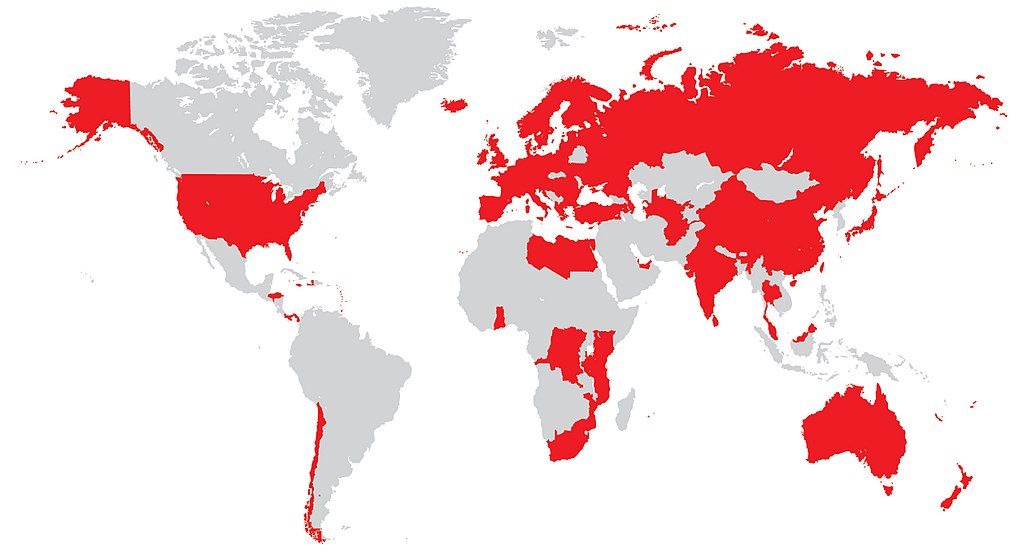Steve Denning writes outstanding articles about Agile, and I would like to give you some insights: here are some extracts from Ten Agile Axioms That Make Managers Anxious published in June on forbes.com.
Most managers have themselves grasped the need to be agile: a recent Deloitte survey (PDF) of more than 10,000 business leaders across 140 countries revealed that nearly all surveyed respondents (94%) report that “agility and collaboration” are critical to their organization’s success. Yet only 6% say that they are “highly agile today.” So, what’s the problem? Why the 88% gap between aspiration and actuality.
It’s not lack of knowledge as to what is agile management or how to implement it. The Laws of Agile are simple but their implementation is often difficult. That’s in part because they are at odds with some of the basic assumptions and attitudes that have prevailed in managing large organizations for at least a century. For example, Agile makes more money by not focusing on making money. In Agile, control is enhanced by letting go of control. Agile leaders act more like gardeners than commanders. And that’s just the beginning.
That’s one reason why merely training staff on Agile processes and practices by itself won’t make a firm agile. Implementing Agile requires a mindset that is fundamentally different from the traditional preoccupations with profit maximization and a philosophy of controlism.
Let’s look at ten of the Agile axioms that leave managers apprehensive, agitated, even aghast.
First Law Of Agile: The Law Of The Customer
1. Firms Make More Money By Not Focusing On Making Money
A growing number of companies have chosen a different goal. They have accepted Peter Drucker’s 1954 dictum that “there is only one valid purpose of a firm: to create a customer.” When delighting their customers through continuous innovation becomes the bottom line, making money is the result, not the goal, of the firm’s activities.
=> The interesting thing is that when firms operate this way, they make a lot more money than companies that focus directly on making money.
=> It involves a shift from a focus on inanimate things (money, products outputs) to a focus on people (human outcomes, experiences, impact).
2. There Are No Internal Customers
It’s common in many big bureaucracies to talk of internal customers. The focus is internal and the silos often fight each other for influence and budget. Amid these internal squabbles, the needs of the internal customer risk becoming disconnected from the needs of the ultimate customer, and result in waste—producing something the ultimate customer doesn’t need or failing to produce what the customer does need.
=> In Agile management, there is no such thing as an “internal customer.” The only purpose of work is the ultimate customer or end-user. Under the Law of the Customer, the original producers not only meet the needs the internal customers: they are given a clear line of sight as to what value is being provided for the ultimate customer.
3. There Are No B2B Organizations
Merely satisfying the needs of the intermediary is not enough for sustainability. This is why those doing the work need to have a clear line of sight to the ultimate end-user and see the meaning in their work and adapt their work to the needs of that end-user.
Microsoft for many years saw the customers of its Windows program as the big retailers like Dell and HP. More recently, they have come to realize that their customer is really the end-user, not these intermediaries: there is now an immense effort to reach out to, understand and interact with these millions of end-users.
4. Making Better Products May Not Make More Money
Making products better, faster cheaper, more convenient or more personalized is a good thing. But in a marketplace where competitors are often quick to match improvements to existing products and services and where power in the marketplace has decisively shifted to customers, it can be difficult for firms to monetize those improvements.
To make a lot of money, the company has to go further. It has to delight non-customers—those who are not already customers. That’s because there are usually vastly more non-customers than customers. They are non-customers for a reason: their needs are not being met.
If the firm can appeal to both customers and non-customers, it can make a great deal of money.
“Instead of being slightly better than everybody else in a crowded and established field, it’s often more valuable to create a new market and totally dominate it”
writes David Brooks in the New York Times.
The Second Law Of Agile: The Law Of The Small Teams
5. Forget Economies of Scale: Your Market Is One Person
The 20th century firm tended to be focused on generic products to achieve economies of scale. By contrast, Agile is about generating instant, intimate, frictionless, low-risk, incremental value at scale. That’s the new performance requirement.
Thus Agile organizations focus on providing intimate value, with an effective “market of one”, i.e. a level of customization and customer service at which a customer feels that he or she is an exclusive or preferred customer of the firm.
For example, search engines are used by billions of people every day across the globe. However, each user gets customized search results based on their locations and refer to places nearby, weather forecast, or traffic condition.
6. Don’t Scale Up: Descale Complexity Down
A key Agile theme concerns descaling work, i.e. a presumption that in a volatile, complex, uncertain and ambiguous world, big difficult problems need to be disaggregated into small batches and performed by small cross-functional autonomous teams, working iteratively in short cycles in a state of flow, with fast feedback from customers and end-users.
=> Trying to scale up the organization to cope with complex problems and leads to unmanageable complexity. Big complex structures are inherently fragile and difficult to change.
Instead of constructing a big complex organization to handle complexity, the organization disaggregates the problem into tiny pieces so that it can be put together in minuscule increments and adjusted in the light of new, and rapidly changing, information about both the technology and the customer.
Control Is Enhanced By Letting Go Of Control
The thought of self-organizing teams tends to make managers worry about losing control. Detailed reports may create the semblance of control, but the reality is often very different from what is in those reports.
=> The solution to reconciling disciplined execution and innovation lies in giving greater freedom to those people doing the work to exercise their talents and creativity, but doing so within short cycles so that those doing the work can themselves see whether they are making progress or not.
7. Agile Is A Mindset, Not A Process
Agile is a mindset, not a process: if it is approached as a process with the old mindset, nothing good happens.
But surely, people ask, there must be some model that we can follow. There is much allure for instance in the Spotify model, so there is a cry: “Let’s implement the Spotify model!” There’s just one problem: as former Spotify coach, Joakim Sundén, often explains, not even Spotify implements the Spotify model.
=> Spotify continues to rapidly evolve and improve its model. In a pair of visits in 2016, we noticed significant differences even within a period of several months.
8. Talent Drives Strategy, Not Vice Versa
“The central premise of a talent-driven company is that talent drives strategy, as opposed to strategy being dictated to talent.,”
says the book, Talent Wins: The New Playbook for Putting People First (HBRP, 2018) by Dominic Barton.
The Third Law Of Agile: The Law Of The Network
9. The Top-Down Organizational Pyramid Is Finished
20th century firms were built for strength, with high walls and moats for the defense of the status quo. Their very raison d’être was to prevent change.
Turning a top-down pyramid into a flexible network is tricky. At the heart of 20th Century management thinking is the notion of a corporation as an efficient steady-state machine aimed at exploiting its existing business model.
By contrast, when the whole organization truly embraces Agile, the organization is an organic living network of high-performance teams. Competence resides throughout the organization and […] innovation can come from anywhere. Agile teams take initiative on their own and interact with other Agile teams to solve common problems. In effect, the whole organization shares a common mindset in which organization is viewed and operated as a network of high-performance teams.
10. Lead Like A Gardener, Not A Commander
In Team of Teams, by General Stanley McChrystal and his colleagues (2015, Penguin Publishing Group), McChrystal explains had to unlearn what it means to be a leader:
” […] less effective than nurturing the organization— its structure, processes, and culture— to enable the subordinate components to function with ‘smart autonomy.’ It wasn’t total autonomy, because the efforts of every part of the team were tightly linked to a common concept for the fight, but it allowed those forces to be enabled with a constant flow of ‘shared consciousness’ […] Within our Task Force, as in a garden, the outcome was less dependent on the initial planting than on consistent maintenance. […] The gardener cannot actually ‘grow’ tomatoes, squash, or beans— she can only foster an environment in which the plants do so. “



